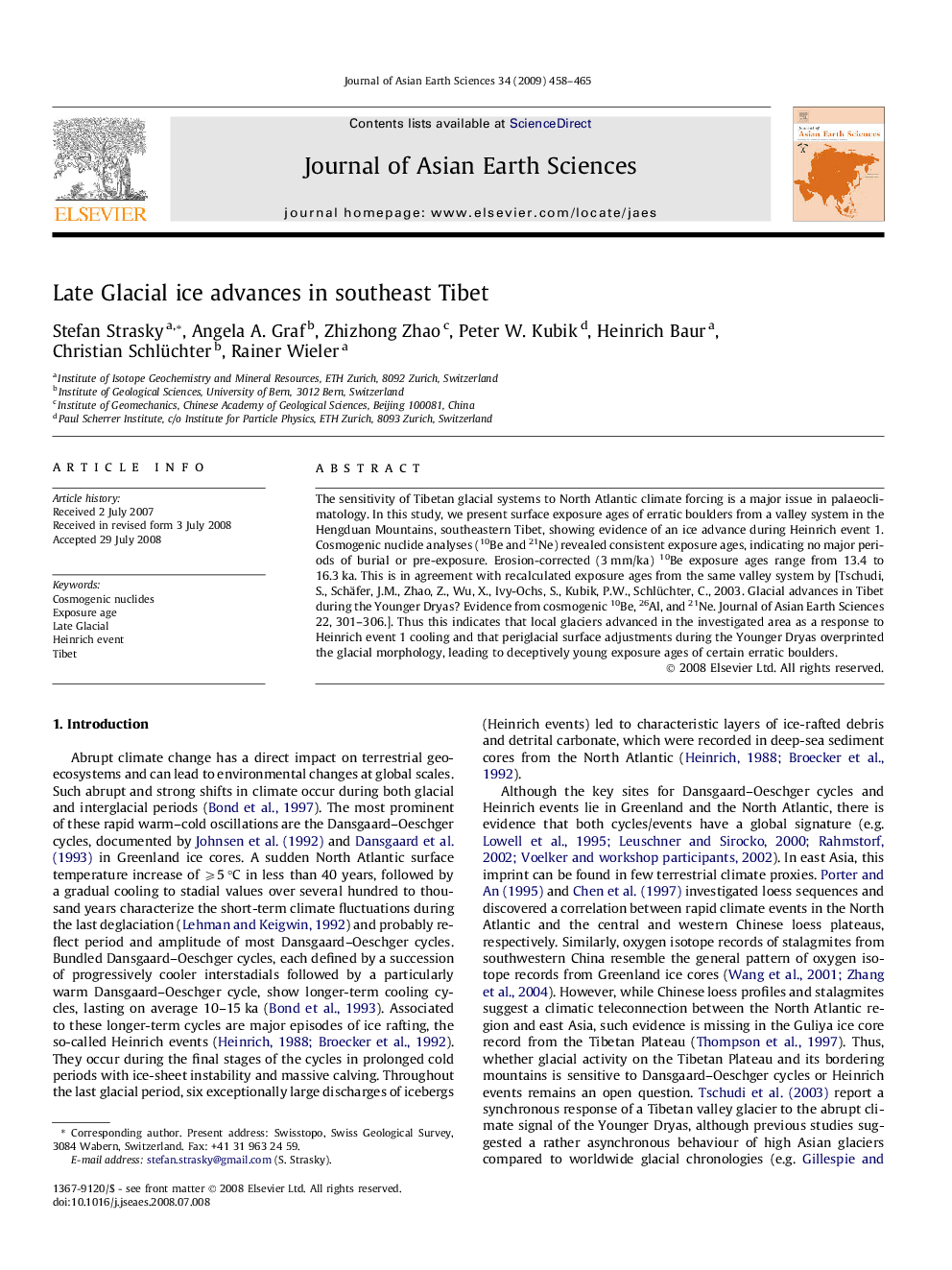| Article ID | Journal | Published Year | Pages | File Type |
|---|---|---|---|---|
| 4732458 | Journal of Asian Earth Sciences | 2009 | 8 Pages |
The sensitivity of Tibetan glacial systems to North Atlantic climate forcing is a major issue in palaeoclimatology. In this study, we present surface exposure ages of erratic boulders from a valley system in the Hengduan Mountains, southeastern Tibet, showing evidence of an ice advance during Heinrich event 1. Cosmogenic nuclide analyses (10Be and 21Ne) revealed consistent exposure ages, indicating no major periods of burial or pre-exposure. Erosion-corrected (3 mm/ka) 10Be exposure ages range from 13.4 to 16.3 ka. This is in agreement with recalculated exposure ages from the same valley system by [Tschudi, S., Schäfer, J.M., Zhao, Z., Wu, X., Ivy-Ochs, S., Kubik, P.W., Schlüchter, C., 2003. Glacial advances in Tibet during the Younger Dryas? Evidence from cosmogenic 10Be, 26Al, and 21Ne. Journal of Asian Earth Sciences 22, 301–306.]. Thus this indicates that local glaciers advanced in the investigated area as a response to Heinrich event 1 cooling and that periglacial surface adjustments during the Younger Dryas overprinted the glacial morphology, leading to deceptively young exposure ages of certain erratic boulders.
